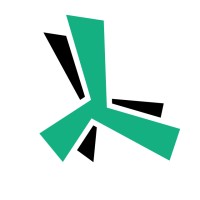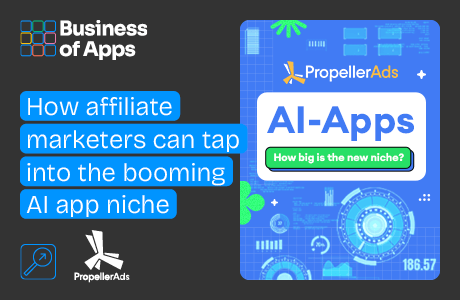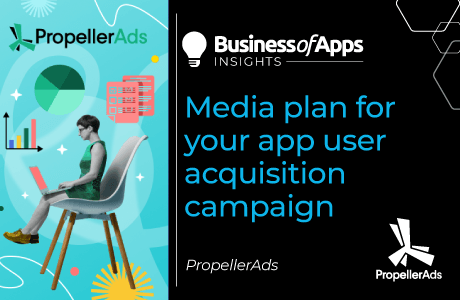We recently introduced a brand-new ad format: Telegram ads. As a completely new traffic source — unlike anything we’ve launched before — it generated a huge buzz and raised many questions:
- How does it work?
- Does it convert?
- How much does it cost to run?
- How does it differ from the official Telegram ads platform?
To address these questions and help our partners gain a thorough understanding of this new format, we analyzed a real case study that perfectly demonstrates PropellerAds’ Telegram ads in action. This case study not only highlights the format’s advantages but also provides a clear and detailed comparison with another widely used format: in-page push ads.
Additionally, it showcases the key differences between PropellerAds’ Telegram ads and the Telegram ads (TG ads) platform — particularly in terms of targeting and other essential aspects.
We believe this detailed overview will answer all your questions, giving you a clear understanding of the PropellerAds’ Telegram ads format, along with practical insights on how to leverage it for your campaigns.
Quick introduction to the Telegram ads format
Telegram ads by PropellerAds are an advertising format designed to display ad creatives within Telegram mini apps. The user flow works as follows:
- A user opens a Telegram mini app. In most cases, these apps are games where users tend to spend a significant amount of time. Additionally, mini-app mechanics include multiple engagement hooks that encourage users to return. One of these is personalized reminders sent via Telegram bots linked to each app.
- When a user performs a specific action, it triggers an ad — usually unintrusive and predictable. In some cases, ads are presented as part of a reward system, meaning users are fully aware they are about to see an offer. This predictability makes Telegram ads more user-friendly compared to other ad formats.
- The user either interacts with the ad or closes it. Our statistics show that ad interactions are frequent, as Telegram ads demonstrate high conversion rates across various verticals. One of the key pieces of evidence for this is the case study we’ll explore later in this article.
Depending on your funnel strategy, you can also use Telegram ads to collect and retarget audiences. This can add a fourth step to the user flow, where users initially engaged through Telegram ads can later be re-engaged with popunder or push ads.
What is the difference between the official and PropellerAds’ Telegram ads?
Readers familiar with Telegram, either as users or advertisers, may know that the platform has its own official advertising system. This official platform allows marketers to place ads within Telegram channels, specifically at the end of a channel’s feed, appearing in the following format:
Source: PropellerAds
What PropellerAds offers is different. The distinction goes beyond just ad placement, which, as you know, is tied to Telegram mini apps. Additionally, PropellerAds provides extended advertising functionality on Telegram while requiring a minimum entry budget of only $100.
Telegram ads vs PropellerAds’ Telegram ads
Source: PropellerAds
Case study overview: What did the advertiser need?
Our partner is the owner of a Telegram mini app. The app itself was a blend of the finance and gaming verticals, where users could grow plants to earn virtual tokens. According to Findmini.apps, these types of mini-apps remain highly popular among users, despite a slight decline in overall market growth.
🔍 Master Onboarding with JTBD & MaxDiff
Discover how to optimize your app’s onboarding process using the Jobs-to-be-Done framework and MaxDiff analysis.
Download nowHere is an example of the creative used in the app’s advertising campaigns:
Source: PropellerAds
The owner approached PropellerAds with a clear request: to expand the app’s overall reach and increase conversions, specifically by driving more app installs. PropellerAds’ task was to leverage the app’s engaging gameplay and enhance its appeal using the most suitable ad formats available on the platform.
We selected in-page push ads and the newly introduced, yet already tested and proven, Telegram ads format.
Campaign overview: Budget, settings, and targeting
The process of scaling the mini app began with an in-page push campaign. While it generated impressions and brought in a significant number of new users, our partner sought even greater scalability.
This led us to implement a new strategy involving two simultaneous campaigns — one using only in-page push ads and the other incorporating Telegram ads traffic. This combination seemed to align perfectly with our goals. Each campaign was further split into two separate variations, differing in creatives and text approaches.
The Telegram ads format allows advertisers to save time on manually creating ad creatives by using the ML-generated auto-creatives feature. These creatives are optimized for conversions, facilitate faster testing, and automate campaign optimization.
Campaign budget and bidding model:
- Budget: $200 daily
- Pricing model: CPA Goal
- Dates: September 20 – October 19, 2024
The targeting settings remained the same across both campaigns, demonstrating the enhanced targeting capabilities available with PropellerAds — especially when compared to the more limited functionality of the official Telegram ads platform.
Targeting details:
- Language: English
- Platforms: Android, iOS, Windows, Linux, macOS (each targeted separately)
- Device targeting: Minimal*
*For this campaign, we did not apply specific device targeting, as the app owner wanted to analyze traffic performance across various devices. However, PropellerAds allows advertisers to include or exclude particular devices for both in-page push and Telegram ads.
- GEO-targeting: NG (Nigeria), BD (Bangladesh), PK (Pakistan), IN (India), ID (Indonesia)
- CPA bidding:
Source: PropellerAds
The second campaign had slightly higher rates, as the app owner aimed to attract more traffic within this setup.
- Tracking: We used PropellerAds’ internal conversion tracker, which was essential for ensuring the CPA model functioned correctly. Proper tracking is crucial, as the algorithm monitors conversions and adjusts accordingly to maintain the budget within the set limit while still delivering the highest-quality traffic available at the chosen bid.
Comparing campaign results: Telegram ads vs in-page push (IPP)
Both campaign variations ran simultaneously for a month, allowing us to conduct an accurate comparison analysis. Here’s what we found:
Campaign with Telegram ads results
Source: PropellerAds
The results were impressive, further proving the effectiveness of the format. However, when comparing these outcomes with campaigns that did not include Telegram ads, we identified several key takeaways.
Key takeaways
Source: PropellerAds
These takeaways are clear, but we will break them down further to explain exactly how they work.
- Click-through rates for Telegram ads campaigns were noticeably higher—almost twice as high when comparing the second versions of each campaign.
- Conversions also saw a significant boost. The first version of the Telegram ads campaign delivered 12 times more conversions than the in-page push campaign.
- Despite the high quality of traffic, CPM remained low, making the campaign both cost-effective and scalable.
Where did Telegram ads perform best?
As the campaign progressed, the number of clicks, impressions, and conversions continued to grow. This allowed us to gain deeper insights into the performance of the Telegram ads format. One key takeaway was identifying the GEOs that delivered the best results.
Here’s what we found:
Source: PropellerAds
The table shows that most of the traffic came from Nigeria, proving that increasing rates for this GEO was a worthwhile strategy. With 24,021 conversions from 12 million impressions, the conversion rate (CR) reached almost 0.2%, significantly higher than the other GEOs in the campaign.
Why did Telegram ads perform better?
We’ve already discussed the advantages of PropellerAds’ Telegram ads format. However, after the success demonstrated in this case study, we were able to analyze additional aspects and draw even more precise conclusions about its benefits—especially when considering the specifics of the offer.
Here are the key insights behind this outstanding performance:
The format is highly engaging by design
The high CTR rates proved that users are genuinely interested in Telegram ads, showing that the format successfully captures attention. Thanks to their unobtrusive and predictable nature—without sudden interruptions to user actions—Telegram ads integrate seamlessly into the app’s interface, making them feel natural and non-disruptive.
The offer was a perfect match for the format
Since we displayed mini-app ads to users already engaging with other mini apps, we could confidently assume we were reaching a highly relevant audience—people already familiar with and interested in such products. Mini-app users naturally enjoy mini apps, making them more receptive to similar new offerings.
Note: Our research indicates that Telegram ads are also highly effective for iGaming, gaming, finance, and media verticals, as well as for promoting Telegram channels.
PropellerAds’ extra features further enhanced performance
With Telegram ads offering extensive customization options, including GEO-targeting, scaling the campaign was seamless. Additionally, customizable bidding played a crucial role in increasing traffic volumes—rate optimization helped attract a large influx of users from specific countries, further maximizing results.
Final thoughts
The case study shows that Telegram ads have huge potential, especially when used for specific verticals. With up to 100 million daily impressions, this new format can be a fresh solution for scaling your campaigns and achieving the results you seek—whether for a mini app, Telegram channel, brand, or CPA offer.
With that in mind, you are welcome to join PropellerAds and experience the power of Telegram ads for yourself.


















